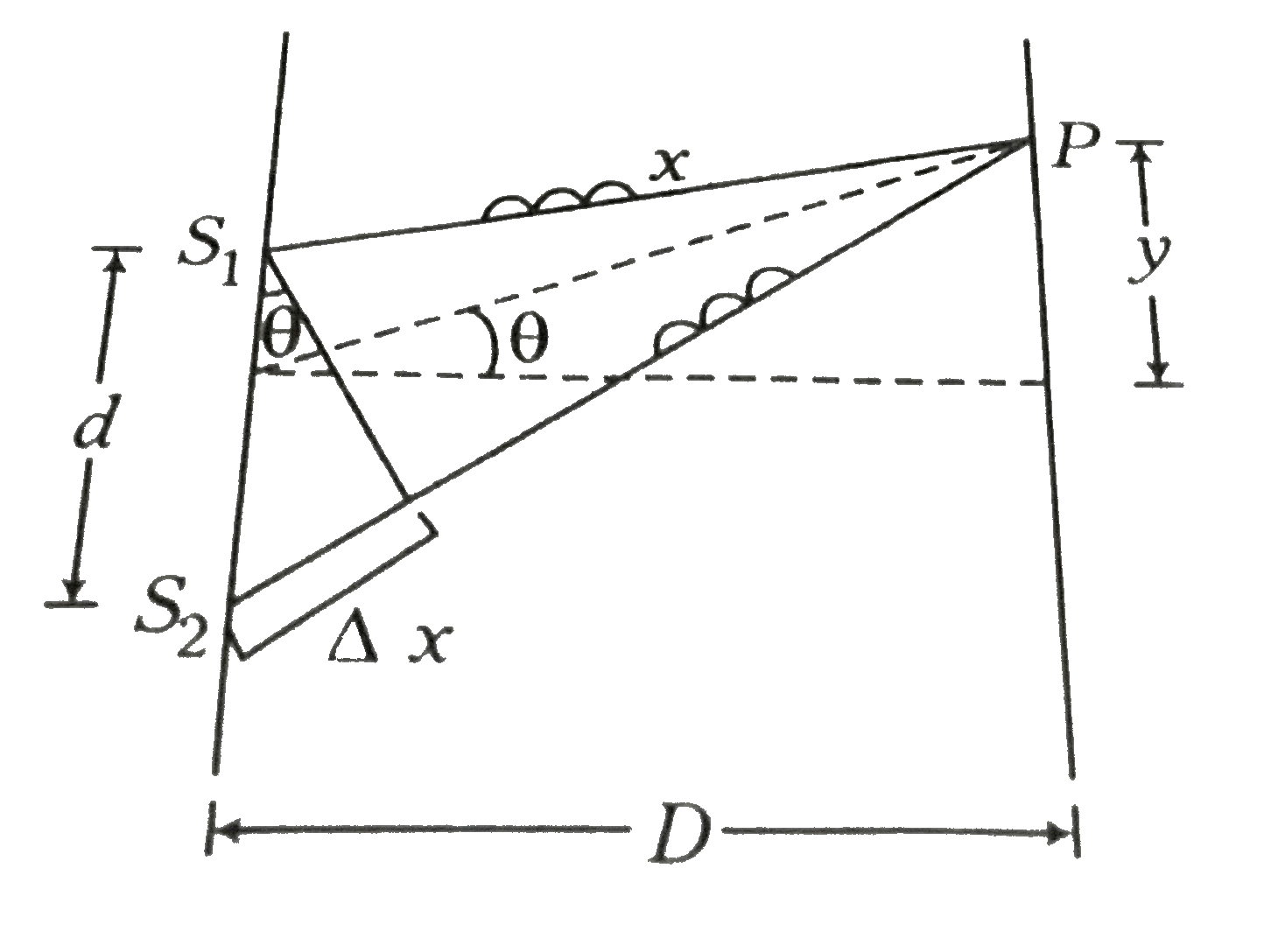In an interference arrangement similar to Young's double-slit experiment, the slits S1 and S2 are illuminated with coherent microwave sources, each of frequency 106 Hz. The sources are synchronized to have zero phase difference. The slits are separated by a distance d=150.0m. The intensity I(θ) is measured as a function of θ, where θ is defined asa shown in fig. If I0 is hte maximum intensity, then I(θ) for 0≤θ≤90∘ is given by ltbrrgt 
I(θ)=I0/2 for θ=30∘
I(θ)=I0/4 for θ=90∘
I(θ)=I0 for θ=0∘
I(θ) is constant for all value of θ
The correct Answer is:C
Step by step video & image solution for In an interference arrangement similar to Young's double-slit experiment, the slits S_(1) and S_(2) are illuminated with coherent microwave sources, each of frequency 10^(6) Hz. The sources are synchronized to have zero phase difference. The slits are separated by a distance d = 150.0m. The intensity I(theta) is measured as a function of theta, where theta is defined asa shown in fig. If I_(0) is hte maximum intensity, then I(theta) for 0 le theta le 90^(@) is given by ltbrrgt by Physics experts to help you in doubts & scoring excellent marks in Class 12 exams.
Topper's Solved these Questions
- BOOK - AAKASH SERIESCHAPTER - WAVE OPTICSEXERCISE - LECTURE SHEET (EXERCISE - I) (INTERFERENCE & YDSE) Level - II (ADVANCED) More than one correct answer type questions4videos
WAVE OPTICS
- BOOK - AAKASH SERIESCHAPTER - WAVE OPTICSEXERCISE - LECTURE SHEET (EXERCISE - I) (INTERFERENCE & YDSE) Level - II (ADVANCED) Linked Comprehension type questions6videos
WAVE OPTICS
- BOOK - AAKASH SERIESCHAPTER - WAVE OPTICSEXERCISE - PROBLEMS (LEVEL - II)33videos
WAVE OPTICS
- BOOK - AAKASH SERIESCHAPTER - WAVE MOTION AND SOUNDEXERCISE - PROBLEMS (LEVEL - II)97videos
WAVE MOTION AND SOUND
- BOOK - AAKASH SERIESCHAPTER - WAVESEXERCISE - EXERCISE-III (Doppler effect :)15videos
WAVES
Similar Questions
In an interference arrangement similar to Young's double-slit experiment, the slits S_1 and S_2 are illuminated with coherent microwave sources, each of frequency 10^6 Hz. The sources are synchronized to have zero phase difference. The slits are separated by a distance d=150.0 m. The intensity I (theta) is measured as a function of theta, where theta is defined as shown. If I_0 is the maximum intensity, then I (theta) for 0lethetale90degree is given by
 View Solution
View SolutionConsider an interference arrangement similar to YDSE. Slits S1 and S2 are illuminated with coherent microwave sources each of frequency 2 MHz The sources are synchronized to have zero phase difference. The slits are separated by distance d= 75m. The intensity I(θ) is measured as a function of θ where θ is defined as shown in figure. if I0 is maximum intensity then calculated I(θ) for (i)θ=0∘,(ii)θ=π/6and(iii)θ=π/2
 View Solution
View SolutionIn Young's double slit experiment, if the two slits are illuminated with separate sources, no interference pattern is observed because
View SolutionIn Young's double slit experiment,the intensity at a point where the path difference is
View SolutionIn a Young’s double slit experiment, the source illuminating the slits is changed from blue to violet. The width of the fringes
View SolutionIn Young.s double slit experiment both the slits are similar. If width of one of the slits is doubled then
View Solution
S1 and S2 are two coherent sources of sound of frequency 110Hz each they have no initial phase difference. The intensity at a point P due to S1 is I0 and due to S2 is 4I0. If the velocity of sound is 330m/s then the resultant intensity at P isView SolutionAn interference pattern is observed by Young's double slit experiment.If now the separation between coherent source is halved and the distance of screen from coheren sources is doubled, then now fringe width
View SolutionWhat is the effect on the interference fringes in a Young.s double-slit experimental due to each of the following operations :
The width of the source slit is increased.View SolutionIn Young's double slit experiment, the ratio of maximum and minimum intensities in the fringe system is 9:1 the ratio of amplitudes of coherent sources is
View Solution

